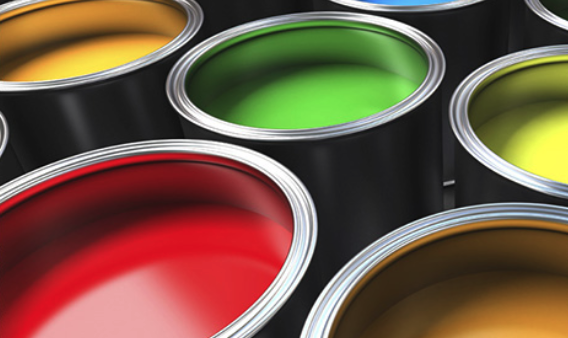Key Points/Overview
When added to products and materials, flame retardants can help prevent fires from starting or limit their spread.
The term “flame retardant” refers to a function, not a specific chemical.
Many different chemicals with different properties and molecular structures act as flame retardants. These chemicals are often combined for effectiveness.
Flame retardants currently in use and new fire-safety chemicals are subject to review by the EPA and other regulators, as well as manufacturer testing.
Uses & Benefits
When added to different products and materials, ranging from electronic devices to furniture, flame retardants can help prevent fires from starting or limit their spread.
According to the U.S. Fire Administration1 and the National Fire Protection Association (NFPA)2, in 2019 an estimated 1.3 million fires were reported in the United States, causing 3,700 civilian fire deaths, 16,600 civilian injuries and $14.8 billion in property damage. The use of flame retardants is especially important today, as the large volume of electrical and electronic equipment in today’s buildings, coupled with a larger volume of combustible materials, can increase the potential for fire hazards
Flame retardants provide consumers with a critical layer of fire protection and can be vital to reducing the risks associated with fire. Today, flame retardants are typically used in four major areas: electronics, building and construction materials, furnishings and transportation.

Electronics & Electrical Devices
Flame retardants can enable modern electronic equipment, like televisions and computers, to meet fire safety standards and can be vital to the safety of hundreds of these products.

Building & Construction Materials
Flame retardants used in a variety of building and construction materials in homes, offices and public buildings, including schools and hospitals, can provide increased fire safety protection.

Furnishings
The addition of flame retardants to the material fillings and fibers used in furnishings helps provide individuals with an extra layer of fire protection and can increase critical escape time in case of a fire.

Transportation
From airplanes to cars to trains, flame retardants can play a key role in protecting travelers from the devastation of fire. After the July 2013 Asiana Airline crash in San Francisco, for example, experts credited flame retardant materials with helping passengers survive the crash. As former FAA Director Steven Wallace told the New York Times, “Flame retardant materials inside the plane, including foil wrapping under the seats, most likely helped protect many passengers.”

Categories of Flame Retardants
Materials and products that need to be fire-resistant can be chemically and physically different, and have different uses requiring the need for a variety of flame retardants.
Chlorinated (CFRs) and Brominated Flame Retardants (BFRs)
Chlorine and bromine are examples of halogenated flame retardants. Halogenated flame retardants have one carbon atom bound to a halogen atom and are used to protect many types of plastics and textiles. Tetrabromobisphenol-A (TBBPA) is a halogenated flame retardant used as a raw material to manufacture printed circuit boards. It is also used in the plastic casings that surround electrical and electronic components.
Phosphorus flame retardants (PFRs)
Phosphorus is used to produce liquid and solid organic or inorganic flame retardants. These types of flame retardants are extensively used in polyurethane foams to make fire resistant furniture, mattresses, and thermal insulation materials. Phosphorous is commonly used in fire resistant coatings and flexible polyvinyl chloride (PVC). It is also applied in electronics and in high temperature plastics used for manufacturing switches and connectors, and it is used for casings in some less flammable plastics.
Nitrogen-based flame retardants (NFRs)
Nitrogen-based flame retardants are used in nylons, polyolefins, polyurethane foams, and fire-resistant paints, textiles and wallpapers.
Inorganic flame retardants and mineral compounds
Various inorganic and mineral compounds are combined with bromine, phosphorus or nitrogen and used as flame retardants or as elements of flame retardant systems. The inorganic compounds include those based on nitrogen, graphite, silica, and inorganic phosphates such as ammonium phosphate and polyphosphate. Mineral compounds include certain phosphates, metal oxides, hydroxides, and other metal products such as aluminum, zinc and magnesium. Inorganic and mineral compounds used with other elements can help to achieve fire safety in plastics, foams, textiles and wood products.
Additional Types of Flame Retardants
- Hexabromocyclododecane (HBCD)
HBCD is a legacy flame retardant that was primarily used in extruded polystyrene (XPS) and expanded polystyrene (EPS) foam insulation in building and construction applications. It is no longer manufactured. - Ethane, 1,2-dibromo
Ethane, 1,2-dibromo is not used in consumer products. It has been used as a flame retardant in modified acrylic fibers, which are used in a variety of industrial applications including filters, paint-roller covers and chemical resistant clothing. - Antimony oxide (Sb2O3)
Sb2O3 can be added to some halogenated flame retardants to help enhance their effectiveness. - Triphenyl phosphate (TPP)
TPP is a compound used as a flame retardant in electronics, PVC, glues, casting resins and hydraulic fluids. - Tricresyl phosphate (TCP)
TCP is an additive flame retardant plasticizer for vinyl resin and chloroprene rubber. - Phenol, isopropylated, phosphate (3:1) (PIP 3:1)
PIP (3: 1) is used in a variety of resin systems in automotive, electronic and other consumer and industrial products.

Safety Information
Chemistry is rooted in innovation, and the next generation of fire-safety products is in various stages of development. Like other chemicals, flame retardants currently in use and new fire-safety chemicals are tested by the manufacturers and are subject to review by the U.S. Environmental Protection Agency (EPA) and regulators around the globe.
EPA has authority to limit or even prohibit a chemical’s use if the agency concludes that the chemical presents or will present an unreasonable risk of injury to health or the environment. EPA recently indicated that approximately 50 flame retardants3 that it had reviewed were unlikely to pose a risk to human health.
The European Union conducted a thorough evaluation of Tetrabromobisphenol-A (TBBPA), a flame retardant used in electronics. The evaluation did not identify any health effects, and consumer exposure was deemed insignificant. A 2013 Review of TBBPA by the Canadian government concluded that “The Government of Canada has also concluded that TBBPA, TBBPA bis (2-hydroxyethyl ether) and TBBPA bis (allyl ether) are not harmful to human health at current levels of exposure.”4
Sources
- U.S. Fire Administration
- National Fire Protection Association (NFPA)
- EPA Newsroom – https://bit.ly/3z8mc0f
- Government of Canada TBBPA Fact Sheet – https://bit.ly/3xYpp1b
- European Union Risk Assessment Report – https://bit.ly/2W8mvtl


